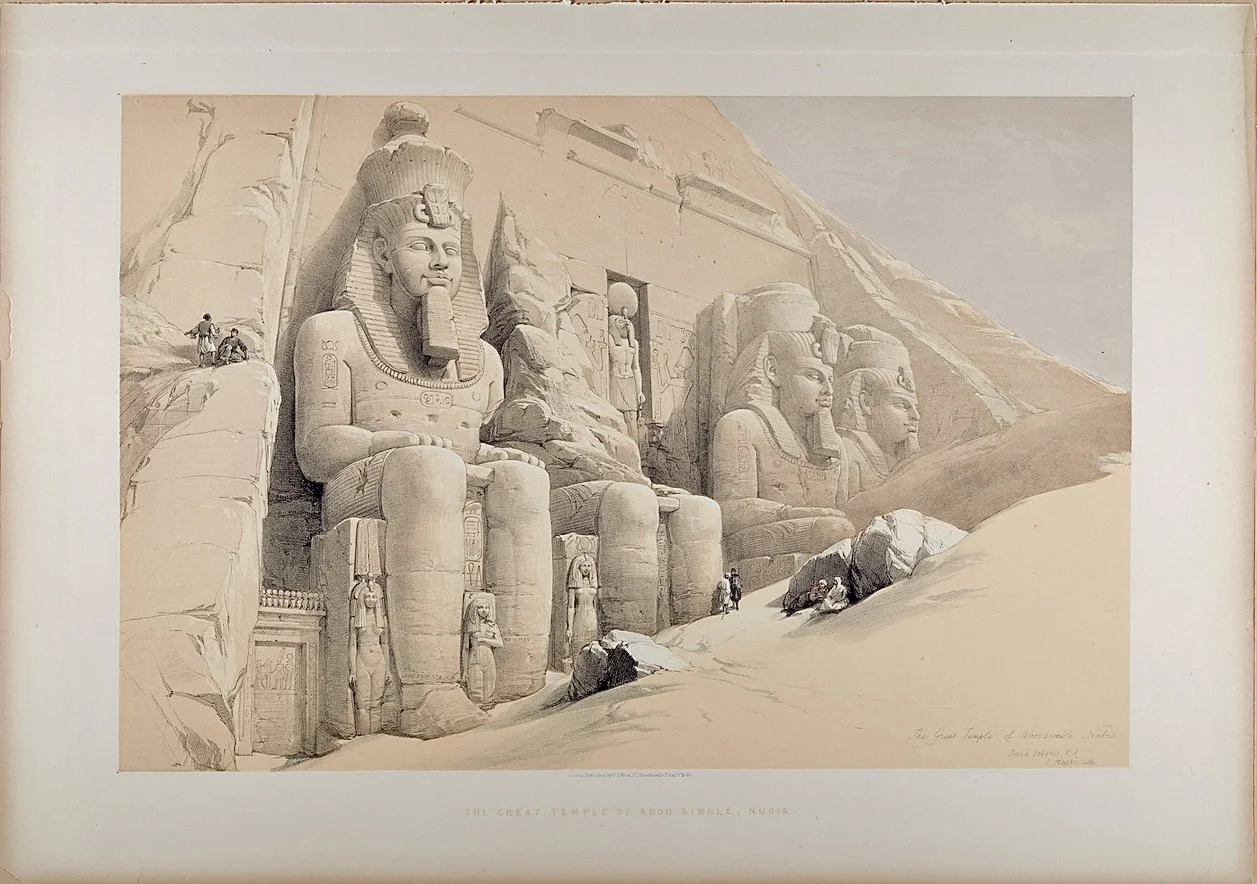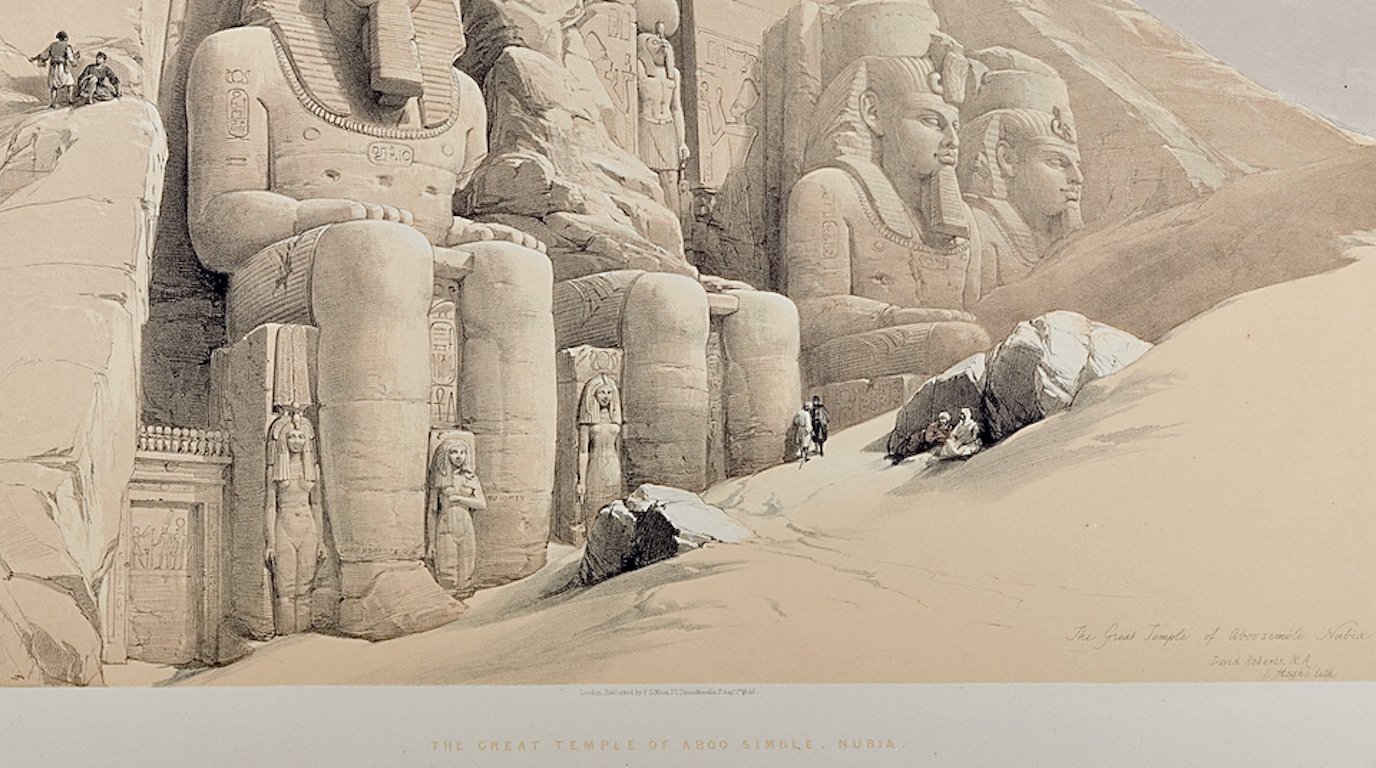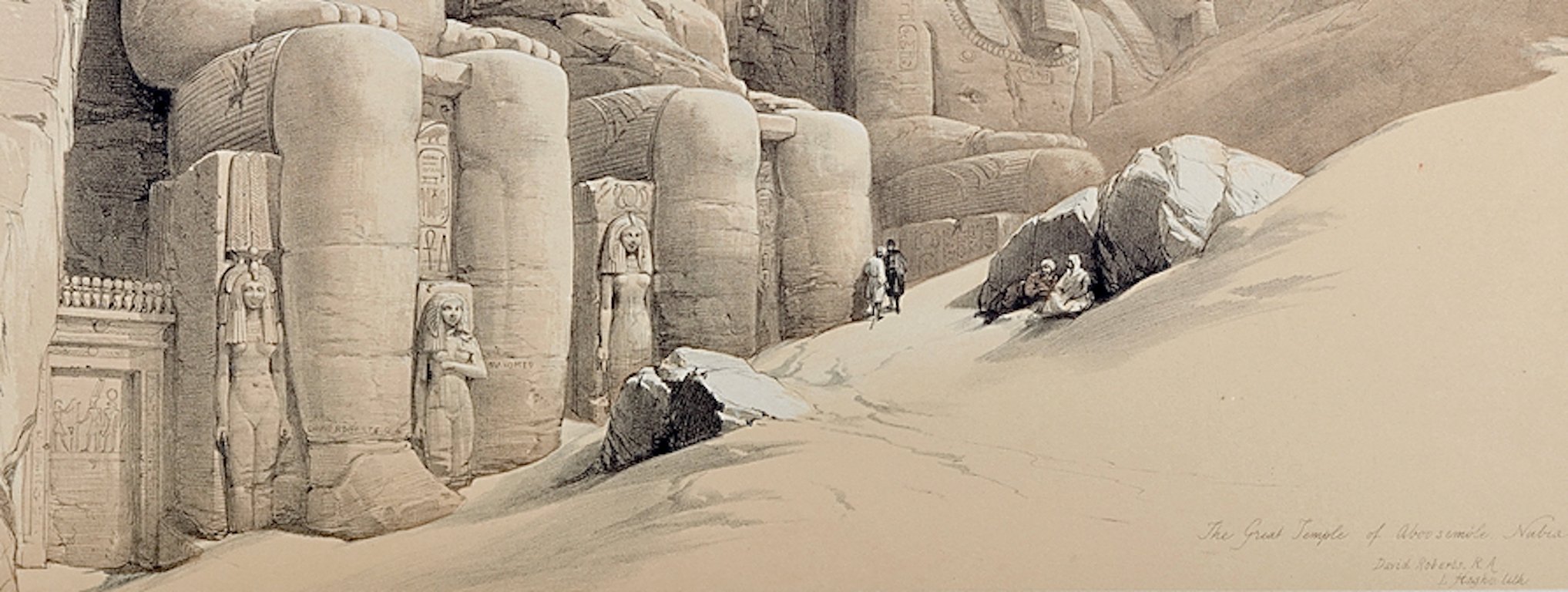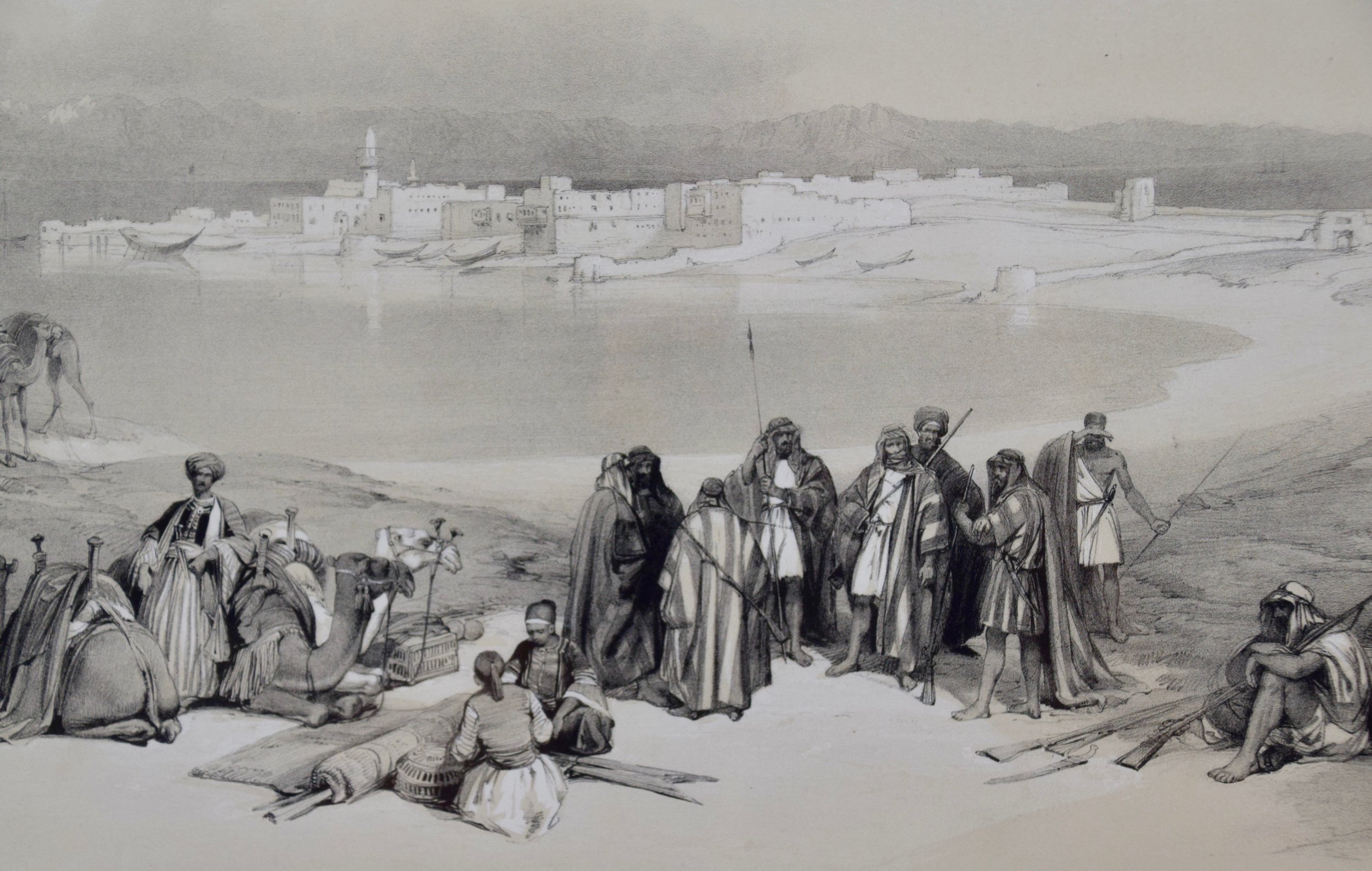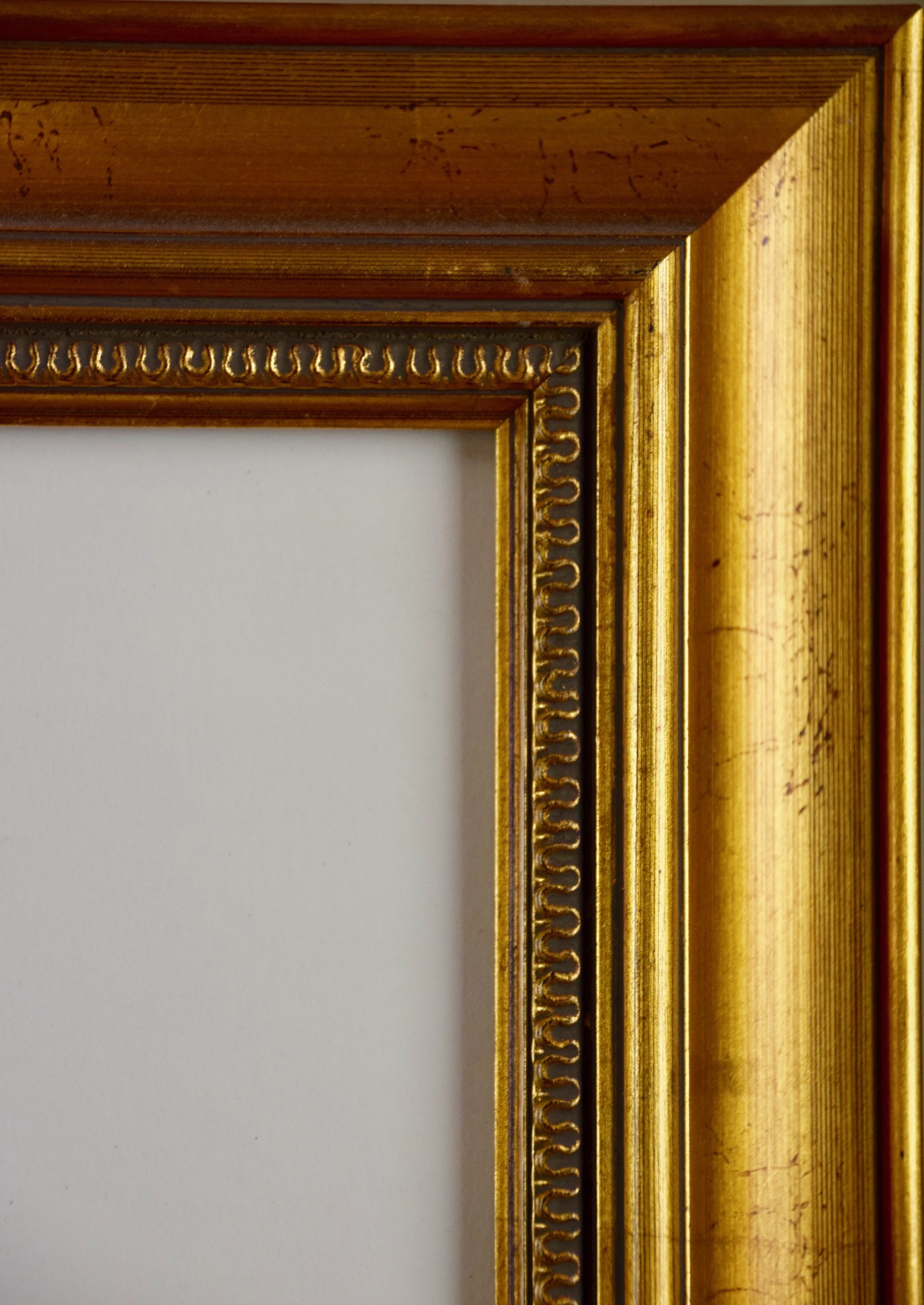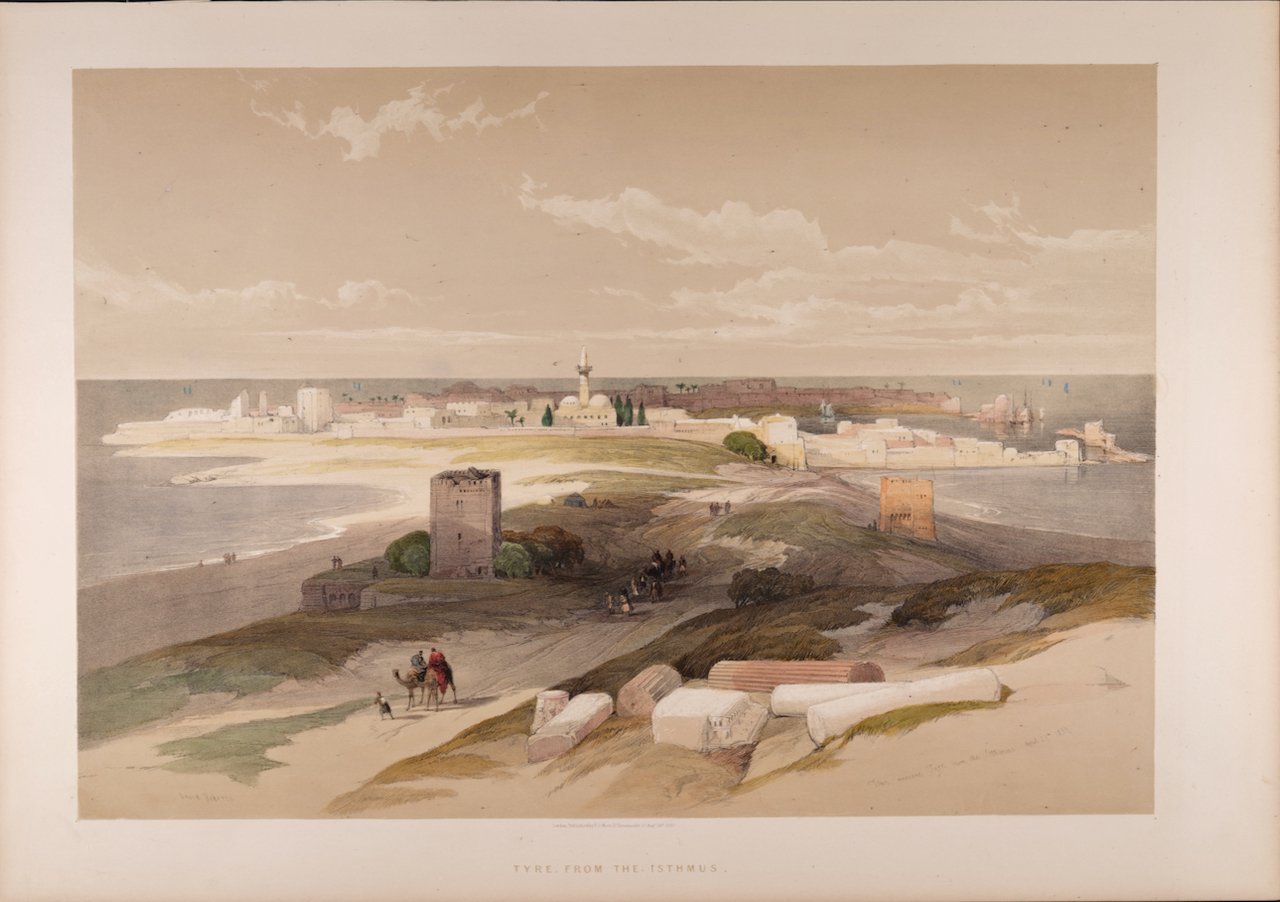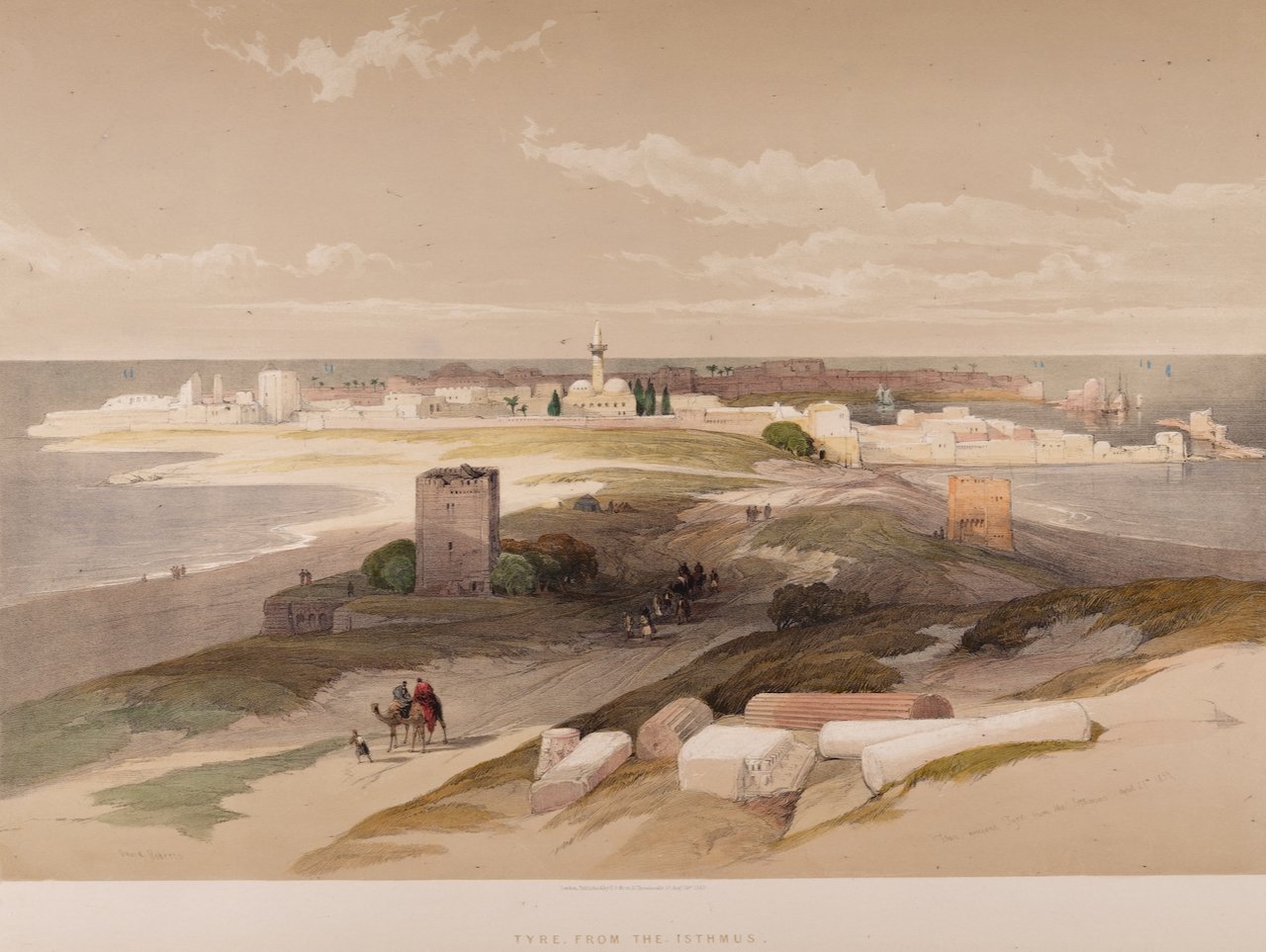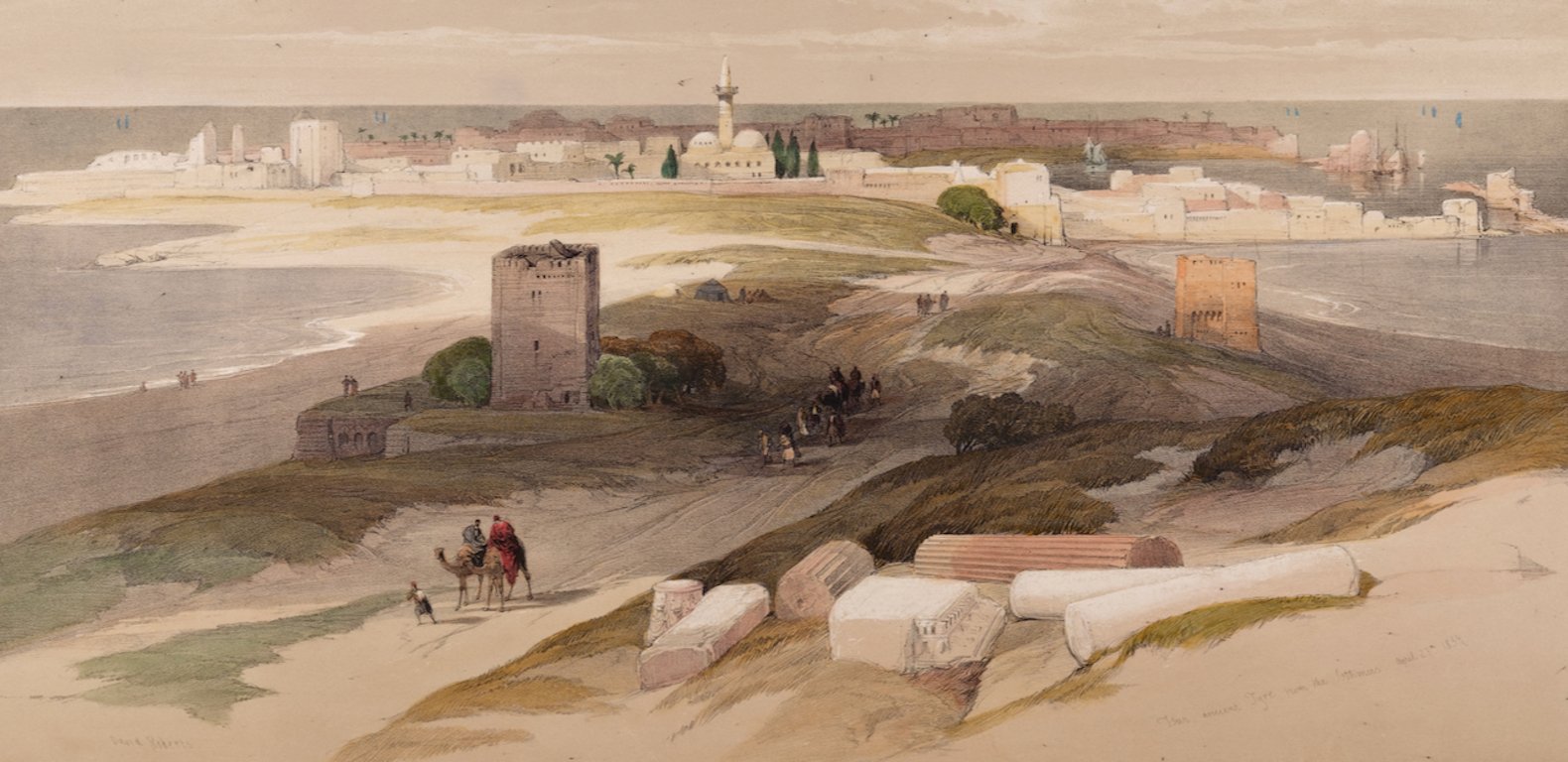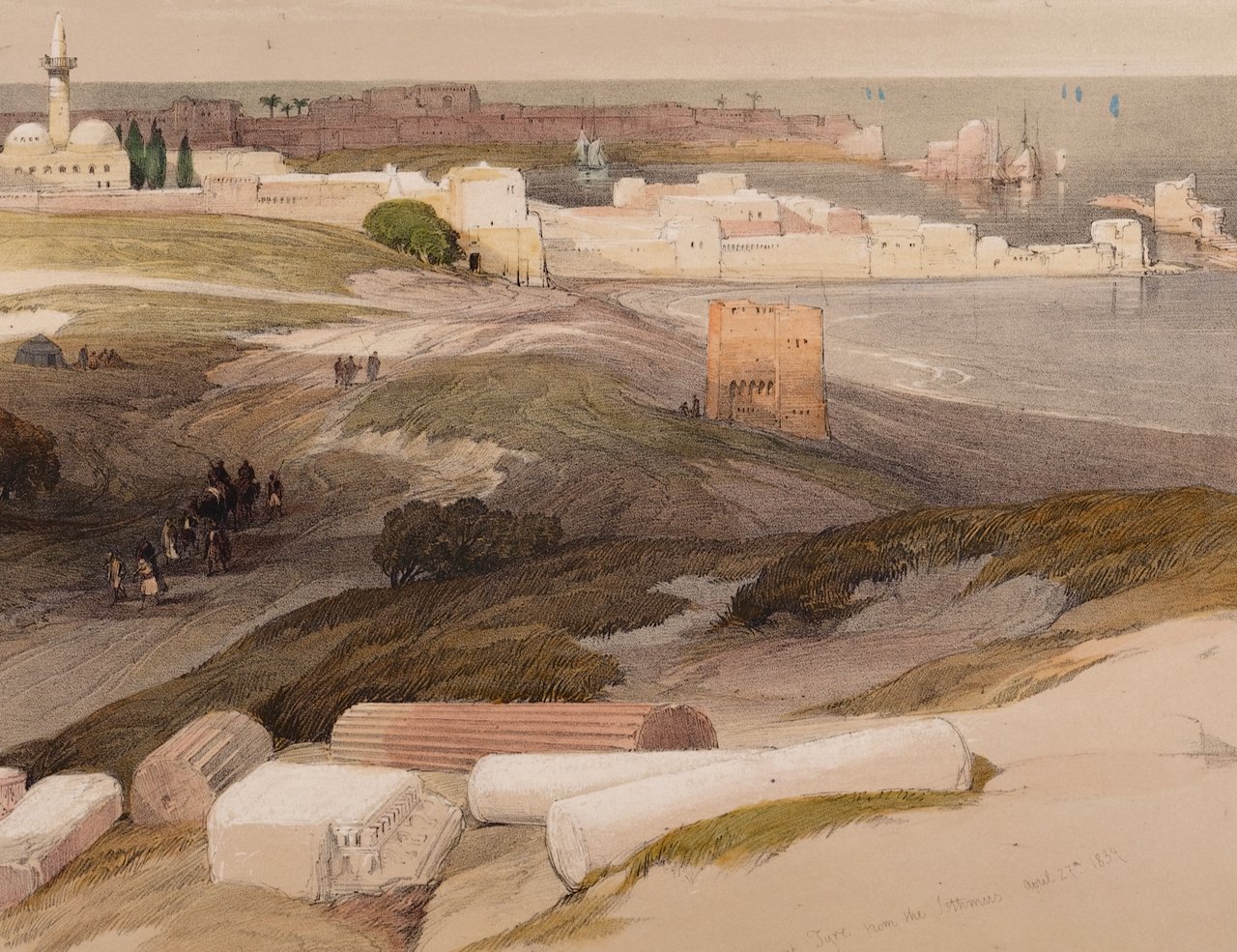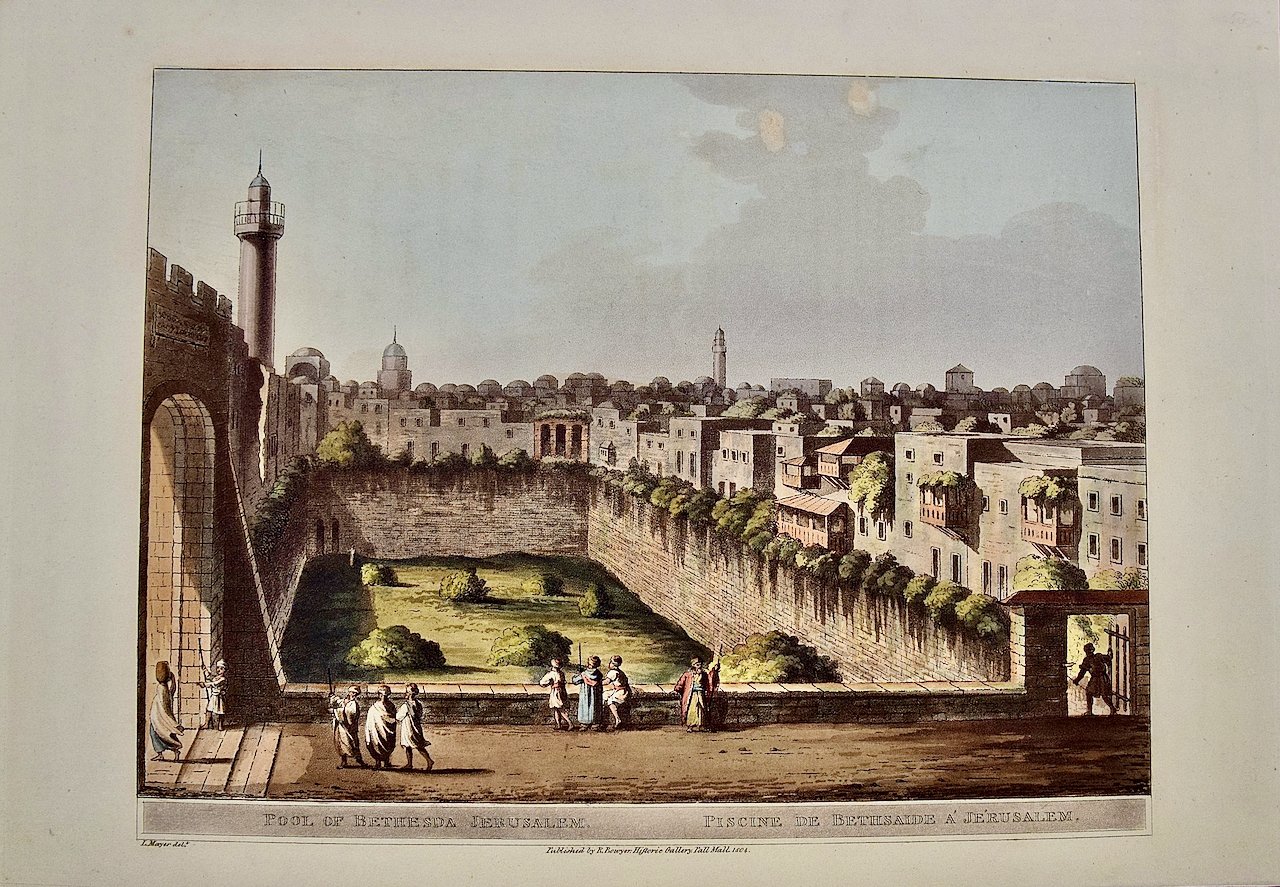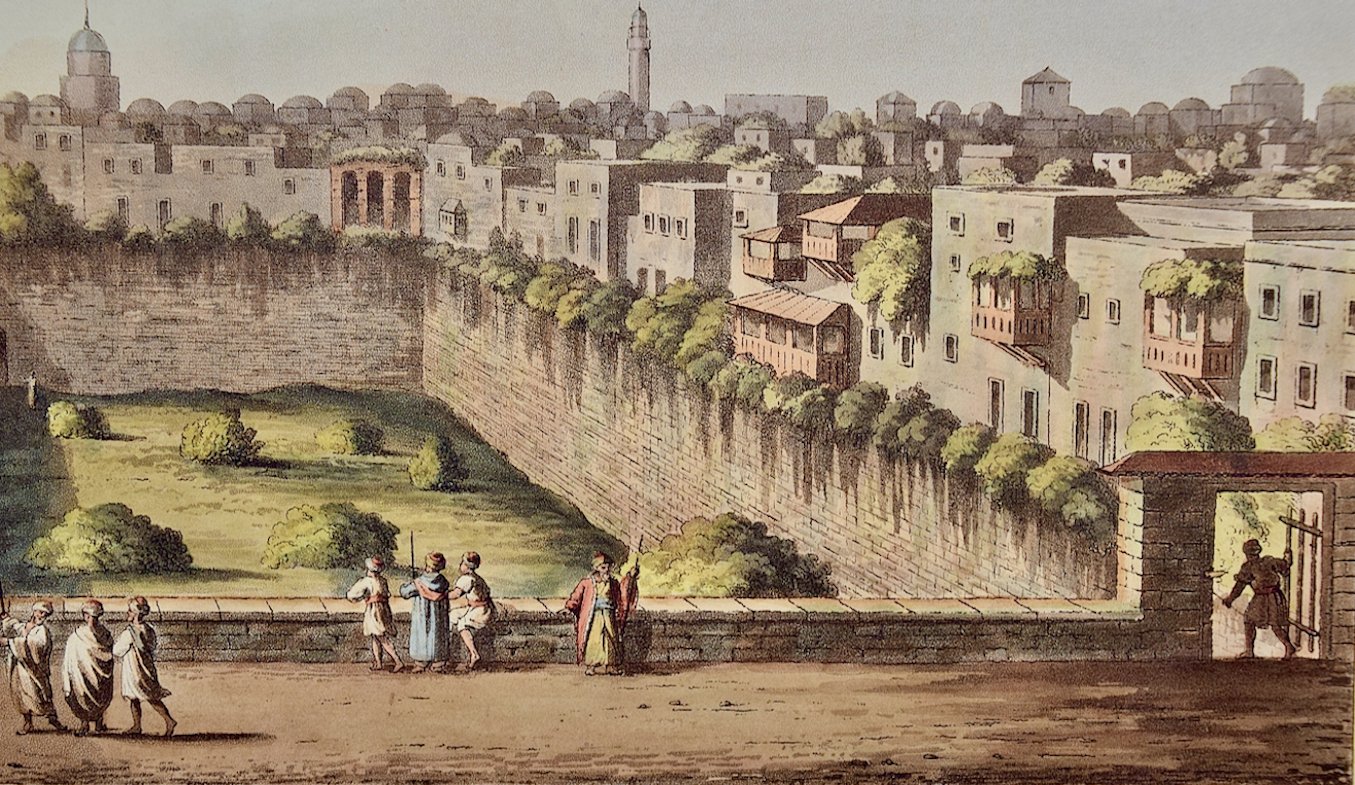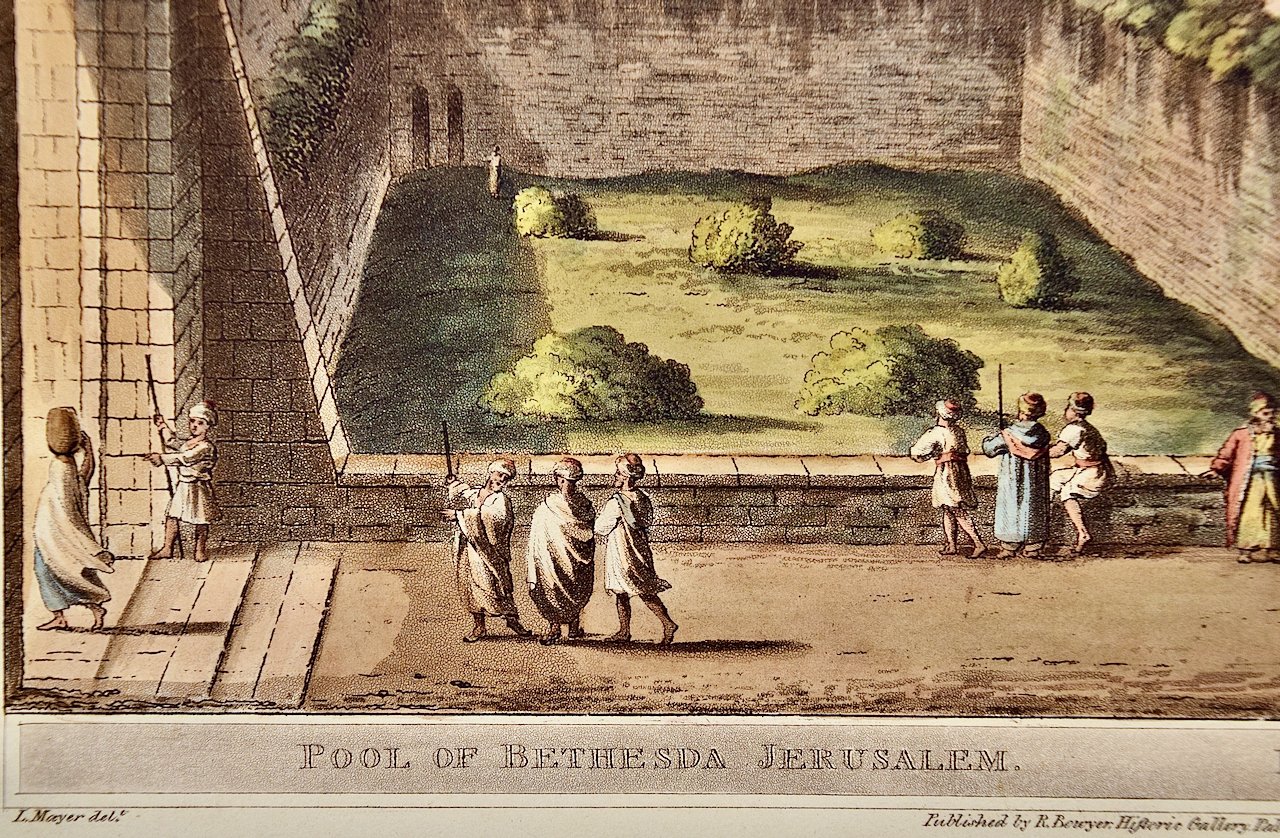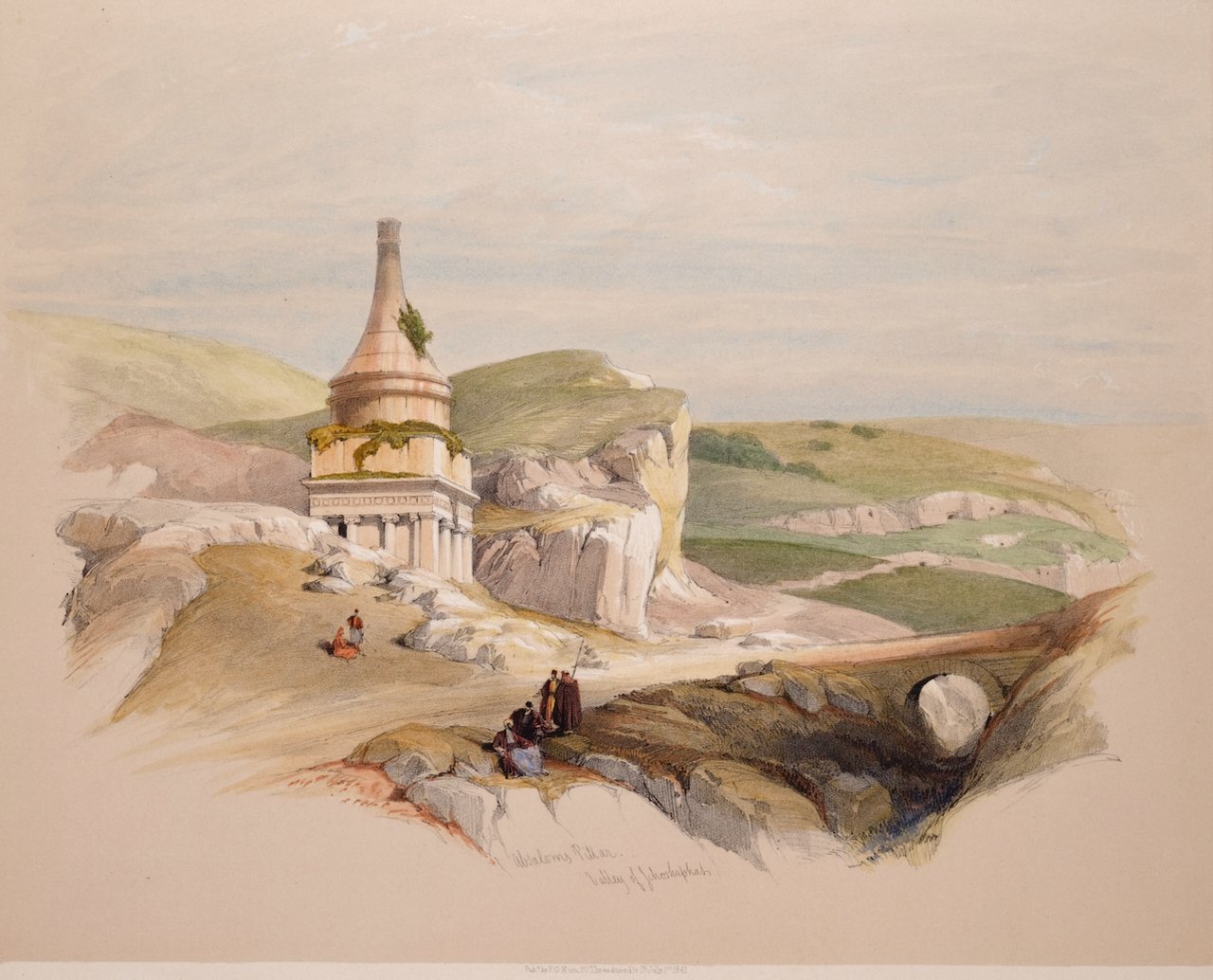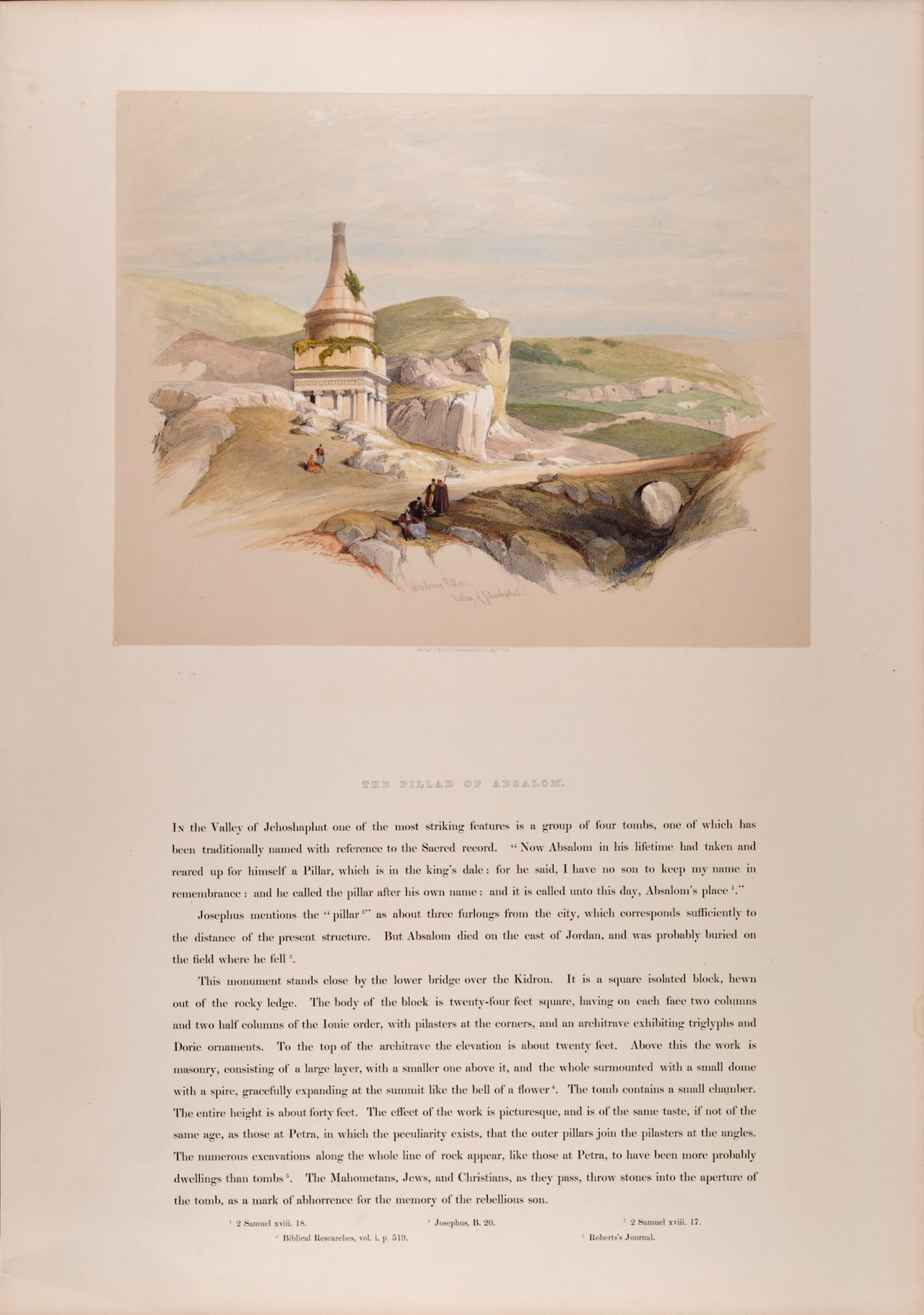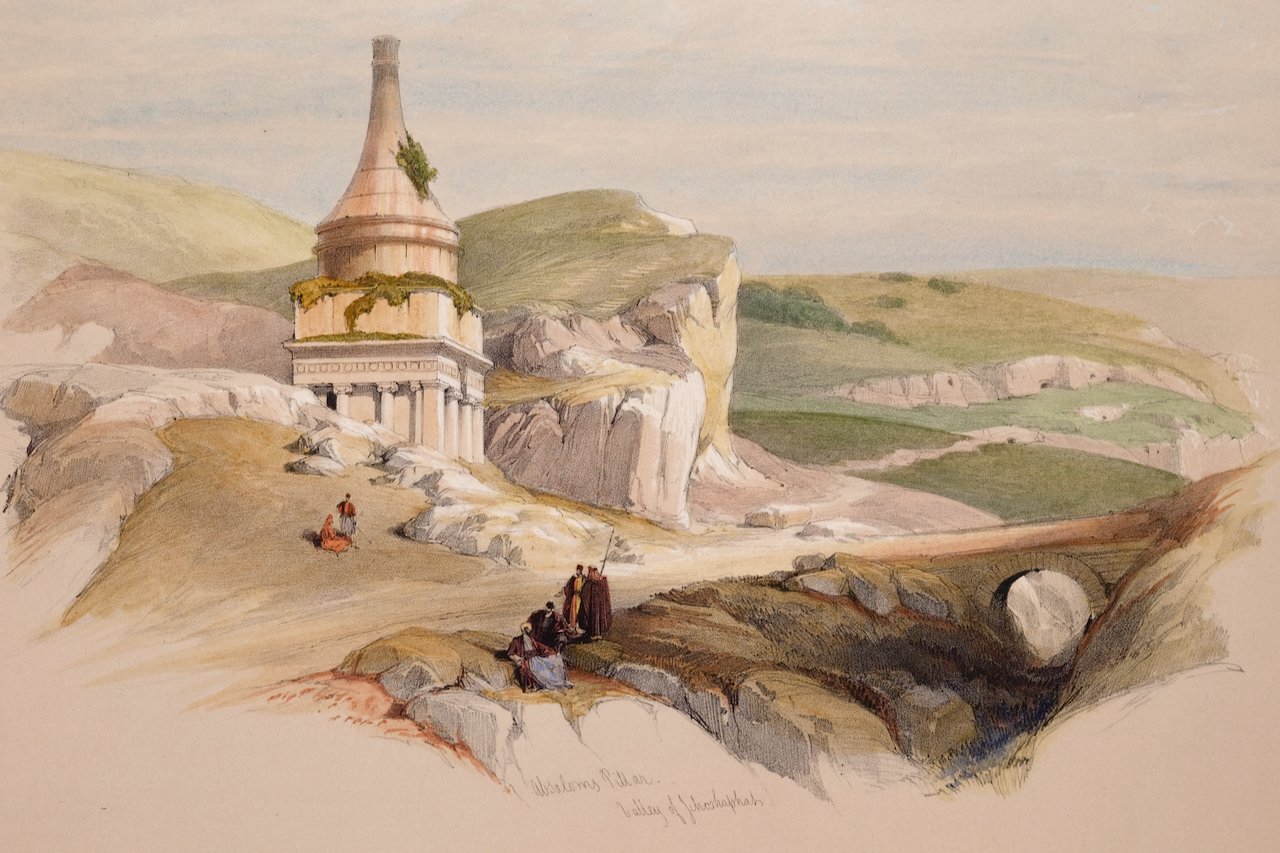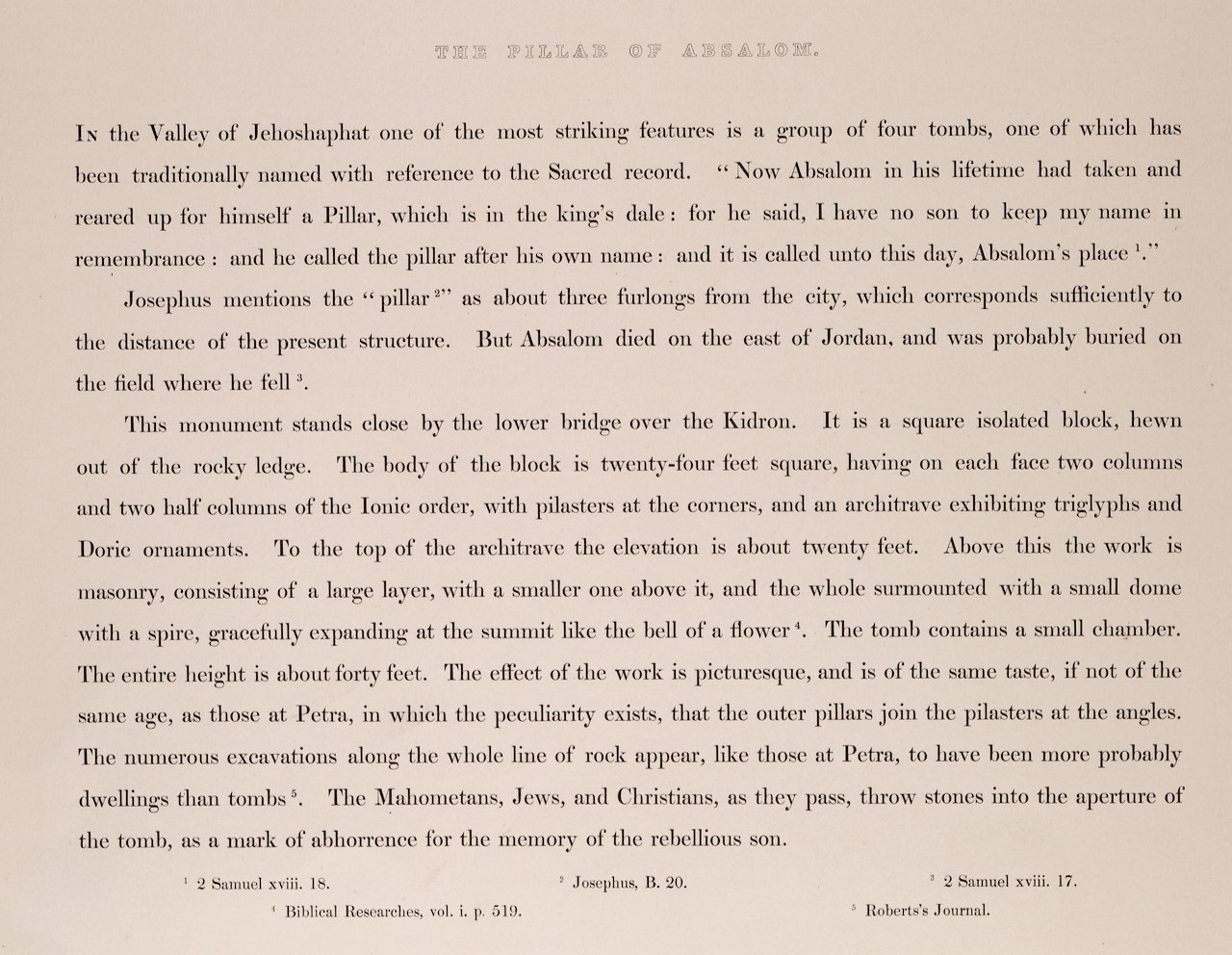The print depicts a view of the imposing temple of Abu Simbel, dedicated to the famous Egyptian pharaoh, Ramesses II. Ramesses II, also known as Ramses II and Ozymandius in Greek. He is considered one of the two greatest pharaohs of the New Kingdom of Egypt. He ruled Egypt from 1279 BC to 1213 BC. He was a warrior king, conducting 15 military campaigns during his reign, as well as a great builder. Roberts' lithograph depicts several Egyptians around the monument to provide perspective to its immense size. Statues of Ramsesses' wife, Nefertari, and his daughters are seen adjacent to the sitting pharaoh's lower legs. Large collections of sand obscured portions of the monument at the time of Roberts' visit on November 8, 1838. It was later fully excavated. Abu Simbel was moved block by block 656 feet back from the Nile River in the 1960's by an international team of engineers to save it from being submerged in Lake Nasser which was to be created by the building of the Aswan High Dam. It is considered one of the greatest archeological engineering and construction projects in history.
This duotone lithograph is printed on wove paper with wide margins. The sheet measures 16.75" high and 23.88" wide. There is faint toning adjacent to the edges of the sheet, as well as a barely perceptible vertical crease in the upper margin. A short tear at the edge of upper portion of the left margin has been professionally repaired on the verso and there is an elongated chip at the edge of the left margin and blunting of the lower left corner. All of these issues would be obscured by a mat when framed. The image portion of the print is in excellent condition. The drawings and watercolours from Roberts' tour of the Holy Land and Egypt were collated together into folios and released over a seven year period by the publisher F.G. Moon from 20 Threadneedle Street London. This lithograph is from the Royal Subscription Edition (1842-1849) with only 500 copies produced per depiction. Louis Haghe (the Belgian engraver and friend of Roberts) worked on all of the lithographs for this series.
David Roberts (1796-1864) was born outside of Edinburgh, Scotland. At age 10 he became a house painter’s apprentice. He continued painting houses and eventually theater scenes in Edinburgh and then in London. His friend, J. M. W. Turner, recognized his artistic talent and encouraged him to become a full-time artist.
In 1839 Roberts traveled to Egypt and then in 1840, through the Holy Land, concluding in Jerusalem. Upon his return to England, F. G. Moon agreed to publish lithographs created by Louis Haghe from Robert’s sketches and watercolors. This publication was highly acclaimed and very popular for its esthetic quality, its historical and topographical accuracy, and Robert’s dramatic depiction of his scenes. Queen Victoria and Charles Dickens were among the subscribers who collected his works. Roberts' and Haghe’s duotone lithographs, often colored, remain extremely sought-after today and have been rising steadily in value.

